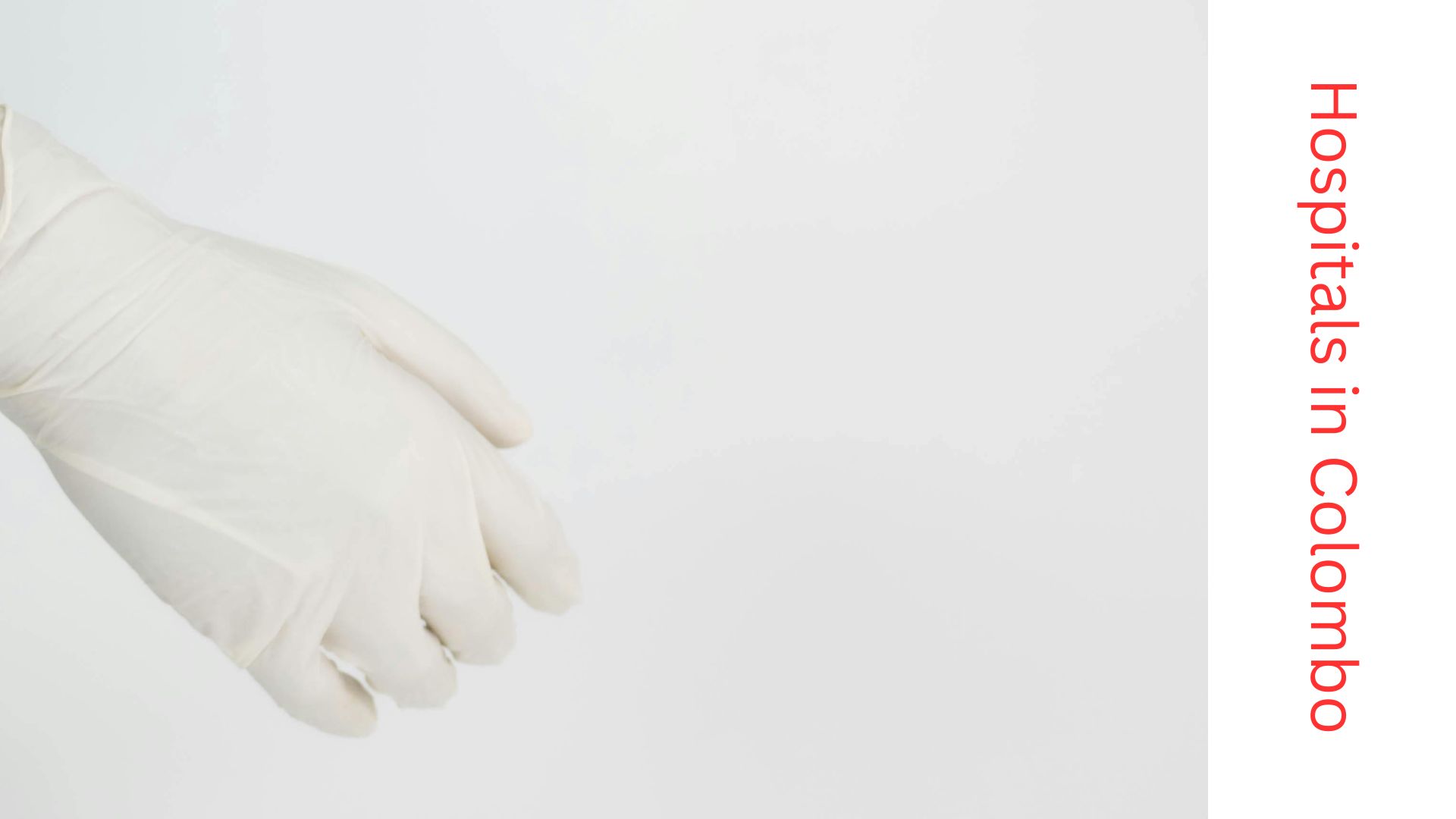Dr Reddy’s Stock Guide: Comprehensive Analysis for Investors 2024
Ranking Title:
Dr Reddy’s Stock Guide 2024: In-Depth Analysis & Investment Insights
Dr. Reddy’s Stock: Dr. Reddy’s Laboratories Ltd is a multinational pharmaceutical company that has grown to become a significant player in the international healthcare sector. As investors seek opportunities within the pharmaceutical industry, understanding the nuances of Dr. Reddy’s stock becomes crucial. This comprehensive guide aims to provide a detailed analysis of Dr. Reddy’s Laboratories Ltd stock, offering valuable insights for both novice and experienced traders.
Founded in 1984, Dr. Reddy’s Laboratories has evolved from a small pharmaceutical company in India into a global enterprise with a presence in over 100 countries. The organization specializes in developing, manufacturing, and marketing a wide range of pharmaceutical products, including generic medicines, biosimilars, and proprietary drug treatments.

Importance of Inventory Analysis
Conducting a thorough inventory evaluation is essential for making informed investment decisions. By examining various aspects of Dr. Reddy’s financial performance and market position, investors can better assess the potential risks and rewards associated with investing in the company’s stock.
Dr. Reddy’s Laboratories was founded by Dr. Kallam Anji Reddy in Hyderabad, India. The company initially focused on producing active pharmaceutical ingredients (APIs) for the domestic market. Over the years, it has significantly expanded its operations and product portfolio.
Key Milestones
- 1984: Establishment of Dr. Reddy’s Laboratories.
- 1986: Began exporting APIs to Europe.
- 2001: Listed on the New York Stock Exchange.
- 2006: Acquired Betapharm, entering the German market.
- 2016: Launched Reditux, its first biosimilar, in India.
Business Segments
Dr. Reddy’s operates through three primary business segments:
- Global Generics: Involves the manufacture and sale of generic medicines across various therapeutic areas.
- Pharmaceutical Services and Active Ingredients (PSAI): Focuses on the production and sale of active pharmaceutical ingredients (APIs) and custom pharmaceutical services.
- Proprietary Products: Develops and markets specialized formulations for niche therapeutic areas.
Financial Performance
- Revenue Trends: Dr. Reddy’s has demonstrated consistent sales growth over the past decade, with occasional fluctuations due to market conditions and regulatory challenges. The company’s diverse product portfolio and global presence have contributed to its overall financial stability.
- Profit Margins: Profit margins have remained relatively stable, although they can be affected by factors such as pricing pressures in the generic drug market and R&D expenses. Investors should monitor these margins, as they reflect the company’s operational efficiency and pricing power.
- Debt-to-Equity Ratio: The company has maintained a conservative approach to debt management, with a notably low debt-to-equity ratio compared to industry peers. This financial prudence provides flexibility for future growth initiatives and helps mitigate financial risks.
Stock Performance Analysis
- Historical Stock Price Trends: Dr. Reddy’s stock has experienced both periods of growth and volatility over the years. Long-term investors have generally seen strong returns, despite occasional short-term fluctuations common in the pharmaceutical sector.
- Comparison with Industry Benchmarks: Compared to industry benchmarks such as the S&P BSE Healthcare Index or the NYSE Arca Pharmaceutical Index, Dr. Reddy’s stock has shown competitive performance, often outperforming during periods of strong company growth or favorable industry developments.
- Volatility Assessment: Like many pharmaceutical stocks, Dr. Reddy’s shares can experience significant price movements due to factors such as regulatory approvals, patent litigation, and overall market sentiment. Investors should be prepared for this inherent volatility in the sector.

SWOT Analysis
- Strengths:
- Strong presence in both emerging and developed markets.
- Diverse product portfolio across multiple therapeutic areas.
- Robust R&D capabilities and a pipeline of innovative products.
- Strong brand recognition in key markets.
- Weaknesses:
- Dependence on the highly competitive generic drug market.
- Vulnerability to regulatory scrutiny and compliance costs.
- Exposure to currency fluctuations in global markets.
- Opportunities:
- Expanding biosimilars market.
- Growing demand for healthcare in emerging economies.
- Potential for strategic acquisitions and partnerships.
- Threats:
- Intense competition in the generic drug industry.
- Increasing pricing pressures from governments and payers.
- Regulatory changes affecting drug approvals and pricing.
Industry Overview
Global Pharmaceutical Market Trends: The global pharmaceutical market continues to grow, driven by factors such as aging populations, increasing healthcare access in emerging markets, and advancements in medical technology. However, the industry also faces challenges, including pricing pressures and evolving regulatory landscapes.
Generic Drug Market Dynamics: The generic drug market, a key focus area for Dr. Reddy’s, is characterized by intense competition and pricing pressures. However, it also presents significant opportunities as more branded drugs lose patent protection and governments seek to reduce healthcare costs.
Regulatory Environment: Pharmaceutical companies operate in a highly regulated environment with stringent requirements for drug development, manufacturing, and marketing. Compliance with these regulations is crucial for maintaining market access and avoiding costly penalties.
Competitive Landscape
Major Competition: Dr. Reddy’s faces competition from both global pharmaceutical giants and regional players. Key competitors include Teva Pharmaceuticals, Sun Pharma, Lupin, and Aurobindo Pharma, among others.
Market Share Evaluation: While Dr. Reddy’s has a strong presence in certain markets and therapeutic areas, its global market share varies by region and product category. The company continuously aims to expand its market share through new product launches and geographic expansion.
Competitive Advantages
Dr. Reddy’s competitive advantages include its robust R&D capabilities, vertically integrated business model, and established presence in both emerging and developed markets. These strengths enable the company to compete effectively in the global pharmaceutical landscape.
Growth Strategies
Research and Development Initiatives: Dr. Reddy’s invests significantly in R&D to develop new generic formulations, biosimilars, and proprietary products. This focus on innovation is crucial for maintaining a robust product pipeline and driving future growth.
Geographical Expansion: The company continues to expand its international footprint, with a particular emphasis on emerging markets with high growth potential. This strategy helps diversify revenue streams and reduces dependence on any single market.
Strategic Partnerships and Acquisitions: Dr. Reddy’s has a history of strategic acquisitions and partnerships aimed at enhancing its product portfolio, expanding market reach, and gaining access to new technologies. These collaborations play a vital role in the company’s growth strategy.
Dividend Policy
Historical Dividend Payouts: Dr. Reddy’s has maintained a steady dividend payout record, providing consistent returns to shareholders. However, the payout ratio may vary based on the company’s financial performance and capital requirements.
Dividend Yield Comparison: Investors should compare Dr. Reddy’s dividend yield with industry peers and other investment options to assess its attractiveness as an income-generating stock.
Future Dividend Prospects: The company’s ability to sustain or increase dividend payouts will depend on factors such as future earnings growth, capital expenditure needs, and overall financial health.
Valuation Metrics
Price-to-Earnings (P/E) Ratio: The P/E ratio is a crucial valuation metric used by investors to assess a stock’s relative value. Comparing Dr. Reddy’s P/E ratio with industry averages can offer insights into whether the stock is overvalued or undervalued.
Price-to-Book (P/B) Ratio: The P/B ratio provides another perspective on valuation, particularly useful for companies with significant tangible assets. A lower P/B ratio may indicate a potentially undervalued stock.
Enterprise Value to EBITDA (EV/EBITDA): This metric offers a capital structure-neutral valuation measure, which is useful for evaluating companies with varying levels of debt. Investors should compare Dr. Reddy’s EV/EBITDA ratio with industry peers to assess relative valuation.

Risk Factors
Regulatory Risks: The pharmaceutical industry is subject to stringent regulations, and any non-compliance or adverse regulatory decisions can significantly impact Dr. Reddy’s operations and stock performance.
Patent Expirations: While patent expirations present opportunities for generic drug manufacturers, they also intensify competition. Dr. Reddy’s must continuously develop new products to offset revenue losses from older drugs facing generic competition.
Currency Fluctuations: As a global company, Dr. Reddy’s is exposed to foreign exchange rate fluctuations, which can impact its financial results when converted into reporting currency.
Recommendations
Current Ratings: Analyst ratings for Dr. Reddy’s stock can vary based on the company’s current performance and future outlook. It is important to consider multiple analyst evaluations and understand the rationale behind their recommendations.
Target Price Estimates: Analyst target prices provide insights into potential stock price movements. However, investors should view these estimates as part of a broader analysis rather than definitive predictions.
Consensus Outlook: The overall consensus among analysts can offer a general sentiment towards Dr. Reddy’s stock. Nevertheless, individual investors should conduct their own research and consider their investment goals when making decisions.
Technical Analysis
Moving Averages: Moving averages help identify trends in Dr. Reddy’s stock price. Key indicators, such as the 50-day and 200-day moving averages, can signal potential support or resistance levels.
Relative Strength Index (RSI): The RSI is a momentum indicator that helps identify overbought or oversold conditions in the stock. Traders often use this metric in conjunction with other technical signals.
Support and Resistance Levels: Identifying key support and resistance levels is useful for predicting potential price movements and setting entry or exit points for trades.
ESG Considerations
Environmental Initiatives: Dr. Reddy’s implements various environmental sustainability measures, including waste reduction and energy efficiency programs. These initiatives enhance the company’s reputation and contribute to long-term sustainability.
Social Responsibility Programs: The company is involved in corporate social responsibility activities focused on healthcare access, education, and community development. These efforts bolster the company’s social impact and strengthen stakeholder relationships.
Corporate Governance Practices: Strong corporate governance is vital for investor confidence. Dr. Reddy’s adheres to global best practices in areas such as board independence, transparency, and shareholder rights.
Future Outlook
Pipeline Products: Dr. Reddy’s maintains a robust pipeline of products in various stages of development. The successful commercialization of these pipeline products has the potential to significantly impact the company’s future growth prospects.
Market Expansion Plans: The company continues to focus on expanding its presence in key markets, particularly in emerging economies with high growth potential. These expansion strategies are crucial for long-term revenue growth.
Technological Advancements: Investments in areas such as digital health, artificial intelligence, and advanced manufacturing technologies are set to enhance Dr. Reddy’s operational efficiency and competitive edge in the future.
Investor Considerations
Suitability for Specific Investor Profiles: Dr. Reddy’s stock may appeal to various types of investors, including:
- Growth Investors: Those seeking exposure to the pharmaceutical sector and potential capital appreciation.
- Value Investors: Individuals looking for potentially undervalued stocks with long-term potential.
- Income-Oriented Investors: Investors interested in dividend payouts and consistent returns.

Long-Term vs. Short-Term Investment Potential
- Long-Term Investment Suitability: While Dr. Reddy’s stock offers opportunities for both long-term and short-term investors, the inherent volatility in the pharmaceutical sector may make it more suitable for those with a longer investment horizon. Long-term investors can benefit from the company’s sustained growth and stability over time.
- Investment Appeal: Dr. Reddy’s Laboratories Ltd is a significant player in the global pharmaceutical industry, providing exposure to both the generic drug market and innovative pharmaceutical products. The company’s strong market position, diverse product portfolio, and focus on research and development present attractive investment opportunities.
- Risks and Challenges: Like any investment, Dr. Reddy’s stock comes with its own set of risks and challenges. Regulatory pressures, intense competition, and market volatility are factors that investors should carefully consider. By thoroughly analyzing the company’s financial performance, growth strategies, and industry dynamics, investors can make more informed decisions about including Dr. Reddy’s stock in their portfolios.
- Investment Strategy: As always, it is crucial for investors to conduct their own research, consider their individual financial goals and risk tolerance, and potentially consult with a financial advisor before making investment decisions.
1. What are the principal factors driving Dr. Reddy’s stock performance?
Key factors influencing Dr. Reddy’s stock performance include the company’s financial results, new product launches, regulatory outcomes, and overall trends in the pharmaceutical industry. These elements collectively impact investor sentiment and stock valuation.
2. How does Dr. Reddy’s dividend yield compare to other pharmaceutical companies?
Dr. Reddy’s dividend yield is competitive within the pharmaceutical sector. However, investors should compare it to specific peers and take into account the company’s growth prospects when evaluating its attractiveness as an income-generating investment.
3. What are the biggest risks associated with investing in Dr. Reddy’s stock?
The major risks associated with investing in Dr. Reddy’s stock include regulatory challenges, intense competition within the generic drug market, and potential impacts from currency fluctuations. These factors can affect the company’s operational performance and stock value.
4.How does Dr. Reddy’s R&D spending compare to industry averages?
Dr. Reddy’s R&D investment is substantial, though it may vary compared to larger multinational pharmaceutical companies. Investors should evaluate R&D performance and the company’s product pipeline to understand its impact on long-term growth.
5. Is Dr. Reddy’s stock suitable for ESG-focused investors?
Dr. Reddy’s has made significant progress in environmental sustainability and corporate social responsibility, making it potentially appealing to ESG-conscious investors. However, it is advisable to assess the company based on specific ESG criteria to ensure alignment with individual investment goals.











